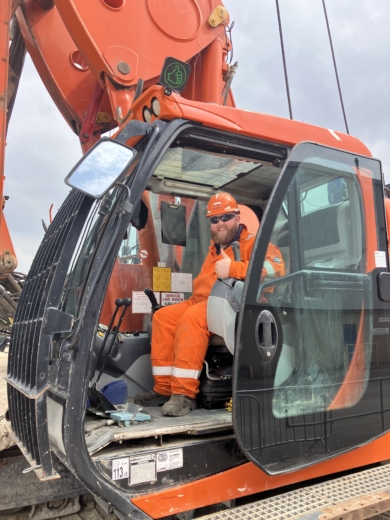Friday May 17, 2024 Piling giant to fit people alarms on all rigs
Cementation Skanska upgrades site safety systems
Cementation Skanska piling rigs and cranes are being fitted with with the latest human form recognition technology in a bid to prevent accidents.
The Spillard Safety Systems’ Human Detection System utilises a series of cameras fitted to the base of the plant that recognises people or objects if they get to close or encroach in a red exclusion zone.
It then automatically suspends tracking and slewing of the machine to avoid contact while sounding an audible alarm. A screen fitted in the cab provides the operator with a 360⁰ view so they can take evasive action if they spot a risk in their area of operation.
The system is complemented with a digital display on the outside of the cab. This enables the operator to provide a green ‘thumbs up’ and sound an audible recorded message that lets someone who wishes to approach or pass close by that it is safe to do so.
Andy Entwistle, Managing Director, Cementation Skanska said “The significant risk posed by physical contact between people and plant is well recognised in the UK construction industry.
“We are determined to do all that we can to reduce and eliminate risks from our sites. Through our collaboration with Spillard Safety Systems, we have been able to develop an approach to configuring and installing these 360⁰ cameras that will support safer ways of working.
“We want to ensure that everyone goes home safely every day. These cameras, combined with our open, inclusive and collaborative working culture, will help to ensure that happens.”
Detection zones can be configured to the type of plant, work activity and environment where operations are taking place.
Data is communicated with the site team and a central control hub that receives live alerts, video footage of incidents, date/time and location details – all done through the Spillard Live intuitive platform.
Rig driver George Gordon operated Cementation’s SR75 unit when the Spillard’s system was trialled.
He said: “It’s good for raising awareness as it tells people there is a danger, instructing them to move away. Barriers are not enough because people can bypass them. It’s great because the system doesn’t rely on you as an operator to activate it – reducing the risk of distractions. You can get on with the job, knowing that there is an added layer of safety.”
Back to news

